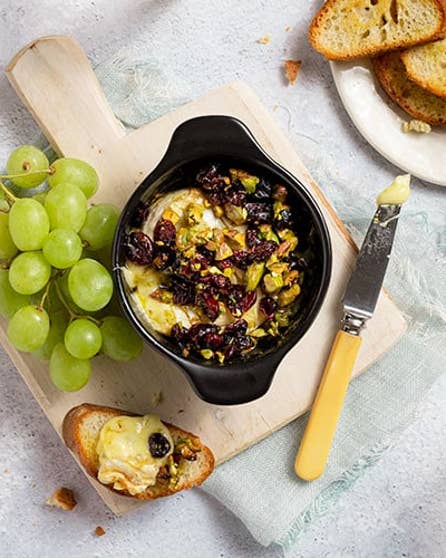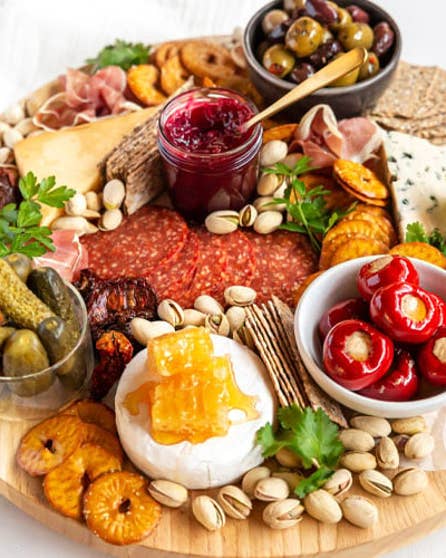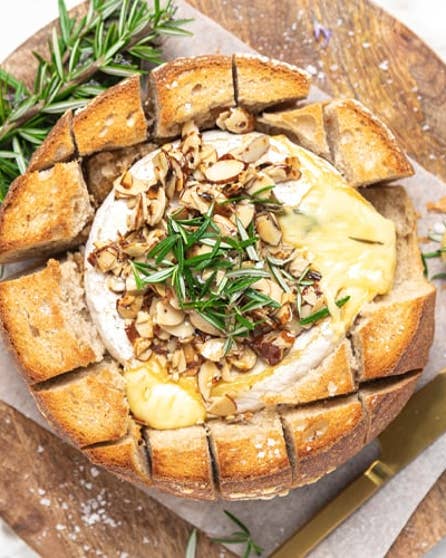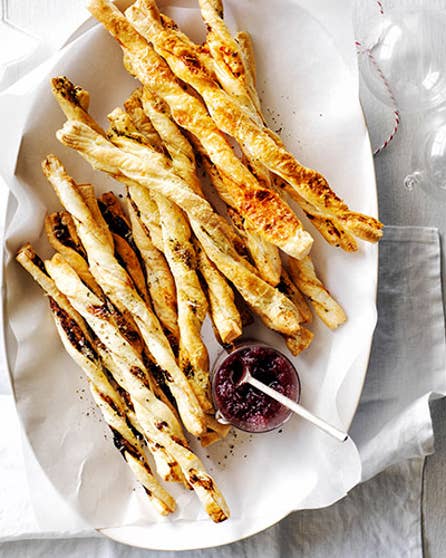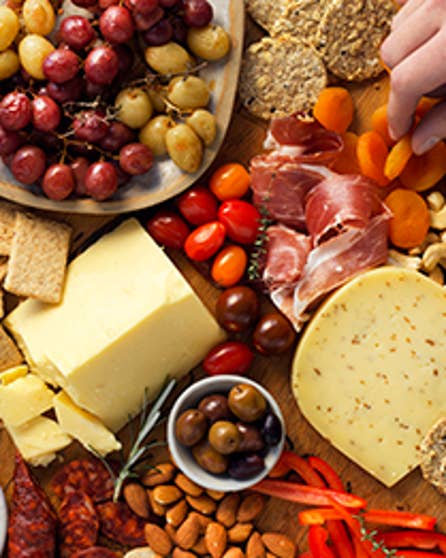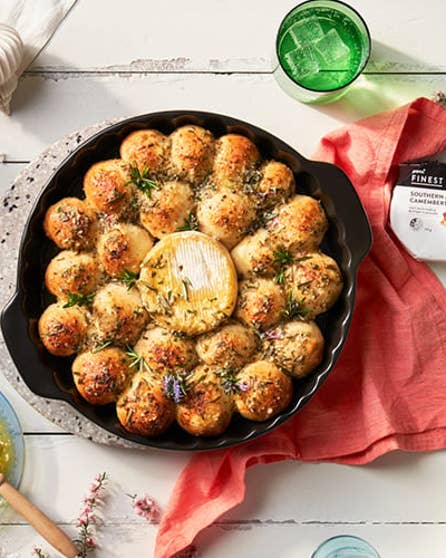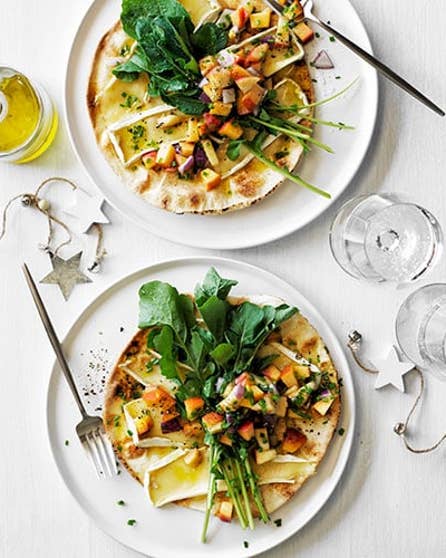How to create a cheeseboard
Our top five tips on how to create a perfect cheese platter.

Whether you are sipping wine with friends, hosting a dinner party, or simply enjoying an indulgent snack, cheese platters are a great sight on any dinner table. At a dinner party it's a great way to keep your guests happy until the main course, or to round off a meal.
Here are 5 ground-rules for creating a tasty, beautiful cheeseboard.
#1 Selecting the cheese
Choose a variety of different cheeses with a range of flavours and textures. Select three-five cheeses. Try a fresh, soft and hard cheese. For example, you can have a creamy soft white cheese with a strong blue cheese and distinctive creamy Smoked Havarti or a tangy Saint Maure goats cheese. Or cheese made from different milks e.g. cow, sheep, buffalo or goat.
Allow 60-100g of cheese per person.
- If you're serving cheese before dinner, consider fresh cheeses or lighter cheeses such as a herb-coated goat cheese or fresh mozzarella.
- If you're serving cheese after dinner, then you can go one of two ways — serve just one rich and creamy cheese. For example a triple-crème cheese or a full-flavoured blue cheese.
- If you’re serving cheese before dessert – as the French do – or at the end of the meal, you can plate the cheese individually for each guest. Each person gets their own plate, and best of all you get to prepare the cheese course before your guests arrive.
#2 Serve at room temperature
Take it out of the fridge about an hour before serving to ensure it’s enjoyed at room temperature – which is perfect for picking up its flavour. Put your cheese on a nice platter or wooden board, cover it with a damp tea towel and leave it for two to three hours. This enables the cheese to come to room temperature without drying out.
#3 Choosing bread or crackers
If your crackers or bread are flavoured with sesame seeds, garlic or herbs, this can mask the flavour of the cheese. Choose plain sourdough, French baguette, neutral crackers or lavosh to accompany cheese. The exception is bread containing walnuts, dried fruit or olives – these are all great with cheese. When choosing crackers try to avoid strong flavours, such as garlic, chilli and zesty lemon, as these will compete with the cheese.
#4 What can I add to jazz up my platter?
Mix up the flavours by adding something sweet, and something salty.
Keep it simple with the pairings:
Dried apricots, whole almonds and plain roasted cashew nuts also make tasty additions to a cheeseboard. Visit our in-store deli section for some recommendations.
#5 Cut the cheese
To keep your platter looking good, cut the cheese in advance on a separate board (but not so far ahead that it dries out) and arrange it on your serving tray. Go for wedges and strips that can be eaten in one or two bites—but don’t go too thin, otherwise the cheese can ‘sweat’ and dry out.
Platters and snacks for entertaining
1 / 0
Not sure what cheese to pick? These selections are sure to be a hit.
Hot tip: Different types of milk affect the flavour and style of cheese.
Goat’s milk has a higher concentration of fatty acids and less milk protein than cow’s milk. This gives goat cheese its signature tangy flavour, with the lower milk protein creating a smoother, creamier texture. Goat's milk in New Zealand makes a diverse range of cheeses including fresh feta, marinated cheese, gouda and semi-soft cheeses.
Sheep's milk cheese is a growth area in New Zealand. Sheep's milk contains more vitamin A, B, E and calcium than cow's milk. Sheep's milk cheese styles include feta, halloumi, blue cheese, camembert and brie.
Buffalo milk contains about twice the fat of cow’s milk, making it creamy and decadent. Despite the higher fat content, the amount of cholesterol is lower than cow’s milk. The protein content is also 30 percent higher than cow’s milk, which creates its distinctive, luscious richness. Buffalo milk cheese styles include mozzarella, bocconcini, feta and ricotta.
